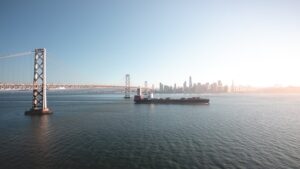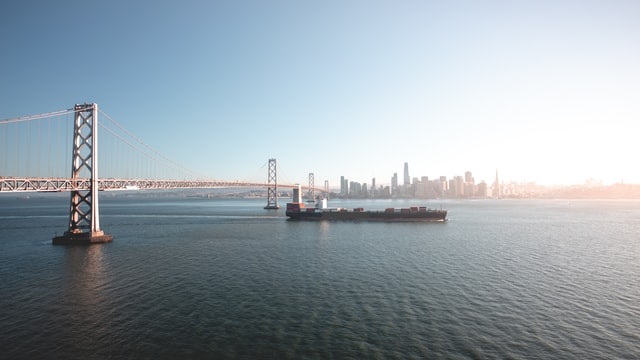-
On the trans-Pacific trade from Asia to North America, volumes on the US West Coast (USWC) have seen the largest growth in the third quarter, up 9.2% year-on-year
-
In the first half of the fourth quarter, a 40-foot container from the Far East to the USWC cost shippers US$3,844.7 on average, a 117% jump year-on-year
-
The first nine months of the year have seen accumulated global volumes fall by 3.4%.
-
The third quarter is the strongest and the only one posting year-on-year volume growth compared with 2019
 Global freight rates have been soaring in recent months, bolstered by strong volumes, particular on the front-haul trans-Pacific trade from Asia to North America, according to the Baltic and International Maritime Council (BIMCO).
Global freight rates have been soaring in recent months, bolstered by strong volumes, particular on the front-haul trans-Pacific trade from Asia to North America, according to the Baltic and International Maritime Council (BIMCO).
Following the disruption in the early months of the pandemic, strong US retail sales and inventory restocking resulted in a strong peak season, which unusually continued after the Chinese Golden Week and further into October, BIMCO said in a new analysis.
The report noted that when volumes were down in the first half of the year, carriers managed to avoid freight rates crashing by lowering capacity offered, and once volumes started to rise, “they were ready to reap the rewards of higher rates and lower bunker costs.”
On average in the first half of the fourth quarter, a 40-foot container from the Far East to the US West Coast (USWC) cost shippers US$3,844.7, a 117% jump compared with the average in the fourth quarter of 2019.
Smaller yet still considerable jumps can be seen between the Far East and the US East Coast (USEC) and North Europe. By November 16, spot freight rates stood at $4,828 per TEU, up 99.9% from November 16, 2019, and $2,436 per TEU, an increase of 69.9%, respectively.
As spot freight rates were rising to new highs, long-term contract rates were initially unaffected, but October marked the first large jumps in contract rates for some time.
Where the USWC has seen the largest jump, long-term contract rates into the USEC have risen by the most. Compared with September 30, they are 30.6% higher at $3,242 per forty-foot container unit or FEU. Long-term freight rates into the US rose 16.9% over the same period to $1,925 per FEU.
While freight rates have been rising, bunker fuel prices remain low, offering carriers even larger margins than the headline rates suggest, said BIMCO.
In volume terms, on the strong front-haul trans-Pacific trade from Asia to North America, the USWC has seen the largest growth compared with last year. Volumes here were up by 9.2% or 276,712 TEUs in the third quarter compared with 2019.
On both US coasts, the third quarter is the first with year-on-year growth compared with the previous quarter, though the increase on the USEC is smaller at 82,564 TEUs.
Over the first nine months of the year, the USWC is down by 4.4% and the USEC by 4.3%, compared with the same period of 2019.
The extra containers into the US in the third quarter of the year came primarily from the Far East, with volumes between here and North America in the third quarter up 18.7% compared with the same period last year.
This was enough to bring accumulated exports over the first three quarters into positive territory for the first time in October, with year-on-year growth up 1.7%. The growth in this trade is not enough to make up for lost volumes elsewhere, which explains why total imports into the US are still down.
But on the Far East to Europe trade, accumulated volumes are still down 8.3% in the first nine months of this year compared with the same period last year as retail sales in the EU have been slower to recover than their American counterparts.
Globally, the first nine months of the year have seen accumulated volumes fall by 3.4%. As expected, the third quarter has proven to be the strongest, and the only one posting year-on-year growth compared with 2019 (+1.2 million TEUs).
Photo by Will Truettner on Unsplash





